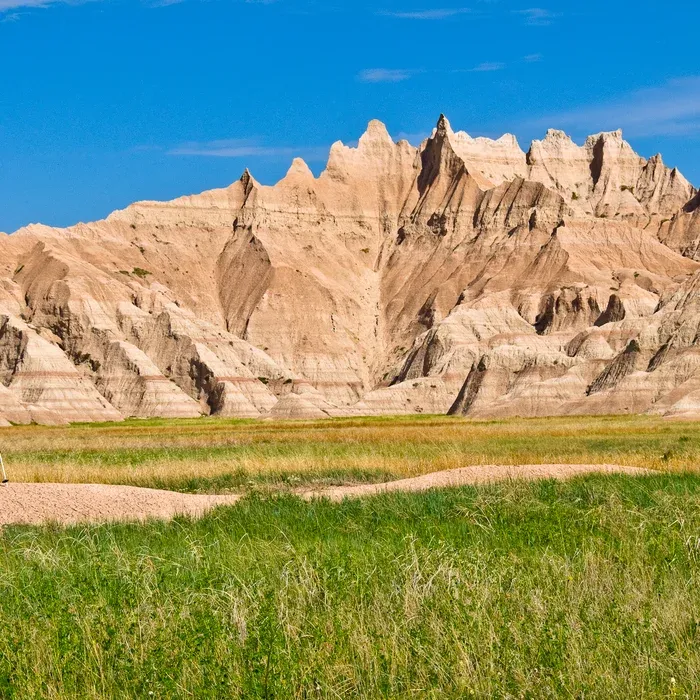Grand Canyon National Park
Grand Canyon National Park, located in the state of Arizona, is one of the most iconic natural landmarks in the United States. The park is home to the stunning Grand Canyon, a massive gorge carved by the Colorado River over millions of years. Spanning over 1.2 million acres, the park offers breathtaking panoramic views, hiking trails, and opportunities for outdoor adventure. Visitors can explore the South Rim and North Rim, each offering their own unique perspectives of the canyon. Grand Canyon National Park is not only a place of natural beauty, but also a testament to the power of geological forces that have shaped the Earth's landscape.

Located in the state of Arizona, Grand Canyon National Park is one of the most iconic and breathtaking natural wonders in the world. The park covers over 1,217,403 acres of land and is home to the famous Grand Canyon, a massive canyon carved by the Colorado River over millions of years. The park offers visitors a chance to experience the awe-inspiring beauty of the canyon, as well as a variety of outdoor activities and opportunities for exploration and discovery.
The Grand Canyon itself is a mile-deep, 18-mile-wide, and 277-mile-long gorge that showcases incredible layers of rock, revealing the Earth's geological history. The canyon’s sheer size and depth make it a truly awe-inspiring sight, and visitors can take in the breathtaking views from numerous vantage points along the canyon rim. The park offers a variety of hiking trails that allow visitors to venture down into the canyon, providing a unique perspective on its immense size and natural beauty. Popular trails include the Bright Angel Trail, South Kaibab Trail, and North Kaibab Trail, all of which offer different levels of difficulty and stunning views of the canyon.
In addition to hiking, the park also offers opportunities for backpacking, camping, and river rafting. The Grand Canyon is a premier destination for whitewater rafting, with the Colorado River offering thrilling rapids and stunning scenery as it winds through the canyon. Guided rafting trips are available for those looking to experience the excitement of the river, while multi-day trips provide a chance to explore the canyon's more remote and hidden areas. The park also offers designated camping areas along the rim and within the canyon, providing a unique opportunity to spend the night under the stars and experience the canyon's natural beauty in a more immersive way.
For those looking to explore the park at a more leisurely pace, the Grand Canyon offers a variety of scenic drives and overlooks that provide stunning views of the canyon and surrounding landscape. The Desert View Drive, Hermit Road, and East Rim Drive all offer opportunities to take in the breathtaking vistas and unique rock formations that make the Grand Canyon such a special place. Visitors can also take advantage of the park's ranger-led programs and interpretive exhibits, which provide insights into the canyon's natural and cultural history, as well as its unique ecosystem and wildlife.
The Grand Canyon is home to a diverse array of plant and animal species, many of which are uniquely adapted to the canyon's harsh and rugged environment. The park is home to a variety of wildlife, including mule deer, bighorn sheep, and California condors, as well as a wide range of reptiles, amphibians, and insects. The park's diverse plant life includes a variety of desert-adapted species, such as cacti, juniper, and sagebrush, as well as unique riparian habitats along the Colorado River. The park also boasts a rich cultural history, with evidence of human habitation dating back thousands of years. The canyon has been home to numerous indigenous tribes, including the Havasupai, Hualapai, and Navajo people, who have left behind a rich legacy of art, artifacts, and traditions that are still celebrated and honored within the park today.
Visitors to the Grand Canyon National Park can also take advantage of the park's numerous visitor facilities, including visitor centers, museums, and educational programs. The park's main visitor center, the Grand Canyon Visitor Center, provides a wealth of information and resources for planning a visit to the park, as well as exhibits and displays that showcase the canyon's natural and cultural history. The park also offers a variety of educational programs and ranger-led activities, including guided hikes, nature walks, and evening programs, providing visitors with opportunities to learn about the canyon's unique ecosystems, geology, and cultural heritage.
In addition to its natural beauty and outdoor activities, the Grand Canyon National Park also offers a variety of amenities and services for visitors, including lodging, dining, and shopping. The park is home to several lodges and hotels, including the historic El Tovar Hotel and Bright Angel Lodge, which offer comfortable accommodations and stunning views of the canyon. The park also features a variety of dining options, ranging from casual cafes and snack bars to full-service restaurants that serve up delicious meals with a side of breathtaking scenery. Visitors can also take advantage of the park's gift shops and stores, which offer a variety of souvenirs, gifts, and outdoor gear, as well as a range of educational materials and books about the park and its natural wonders.
Overall, Grand Canyon National Park offers visitors a once-in-a-lifetime opportunity to experience the awe-inspiring beauty of one of the world's most iconic natural wonders. Whether exploring the majestic canyon, embarking on a thrilling river rafting adventure, or simply taking in the stunning vistas and unique wildlife, the park offers a truly unforgettable and immersive experience for nature lovers and outdoor enthusiasts of all ages. With its rich natural and cultural history, diverse array of outdoor activities, and stunning natural beauty, the Grand Canyon is a must-see destination for anyone looking to explore and discover the wonders of the American Southwest.






